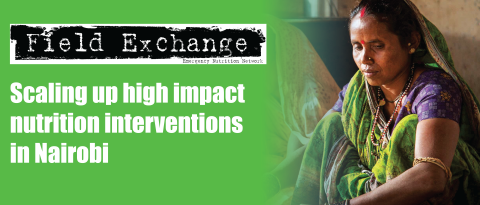Wasting in South Asia: Consultation on building the evidence base on the policy and programme response
A one-day consultation was held in New York on 16 November 2018 to examine the evidence on wasting in South Asia and guide the direction of future collaborative efforts of the No Wasted Lives coalition in the region. The consultation was organised by UNICEF with the following objectives: (1) to share the status of policy and programme action to care for severely wasted children in South Asia; and (2) to identify evidence gaps, research priorities and way forward to build the evidence base to inform the policy and programme response in South Asia. Members of No Wasted Lives and the Council of Research and Technical Advice on Acute Malnutrition (CORTASAM) and researchers and academics were invited to join the consultation. There were 32 participants, including 13 participants who joined the meeting remotely.
In the morning, presentations examined the context of and response to wasting in South Asia, with a specific focus on India, which carries about 80% of the regional wasting burden and where the government is developing national guidelines on the community-based management of acute malnutrition (CMAM). In the afternoon, the participants discussed the implications of the data and evidence presented on the design of policies and programme to prevent and manage severe wasting. The following conclusions were drawn.
First, the South Asia context has several unique characteristics that require further exploration because they may warrant alternative approaches to the care of wasted children. The ‘very high’ prevalence of wasting (15.9%) in South Asia exceeds all other regions, yet the post-neonatal mortality rate is relatively low. Contrary to countries in other regions, the prevalence of wasting is highest at birth in South Asia, which suggests that poor maternal nutrition is a key driver. A higher proportion of wasted children in South Asia experience wasting for prolonged periods than in sub-Saharan Africa. In India, severely wasted children respond lower and slower to treatment for reasons that are not fully understood. There are also questions concerning the mortality risks of severe wasting and child survival benefits of treatment in South Asian countries, which appear to be lower than in sub-Saharan African countries. Nevertheless, the mortality risks are not low enough to ignore, particularly in the first six months of life, and there are potentially long-term impacts of wasting on cognition and learning.
Second, the draft of India’s national CMAM guidelines and the country level adaptations build on the relatively strong community platforms for early case detection, community-based management and referral in India. With these guidelines, the government seeks sustainable solutions that focus on both the prevention and treatment of wasting, including during the first six months of life. The current draft of the guidelines supports the use of weight-for-height (but not mid-upper arm circumference) to identify wasted children and does not promote the use of ready to use therapeutic food to treat severely wasted children, even though these are supported by the World Health Organization (WHO) recommendations. These approaches are likely to be adequate, provided the intervention provides a quality product that complies with WHO specifications, and systems are in place to identify and refer severely wasted children with medical complications for inpatient care. These guidelines provide an opportunity for a learning agenda including the cost-effectiveness of this alternative model of care for severely wasted children.
Third, research in South Asia can contribute to global and regional efforts in optimising and innovating care and treatment approaches for children with severe wasting. Areas of research include identifying effective approaches to prevent and manage wasting in infants aged less than six months; modifications in the quantity, duration and formulations of ready-to-use therapeutic food (RUTF) use in nutritional rehabilitation; the use of home-based foods or home-augmented foods to treat severe wasting; and transitioning from treatment foods to family diets. This research could facilitate the development of a greater range of treatment options that are tailored to cultural preferences and have the potential for greater coverage, quality and sustainability of care and treatment for severe wasting.
In moving forward, the participants identified the need for a new narrative on wasting in South Asia (and globally) that considers prolonged versus short episodes of severe wasting; that links wasting with stunting; and that frames the functional consequences of wasting on cognition and learning as well as the mortality risks. CORTASAM offered its expertise by supporting further exploration on wasting in South Asia through a sub-working group of the CORTASAM. Potential areas of focus for this working group include: further context-specific refinement and expansion of priority evidence gaps in South Asia that complement the CORTASAM research agenda; the design and/or review of protocols for secondary data analysis and implementation research; and the interpretation and dissemination of research findings.
For further information please contact Harriet Torlesse.


